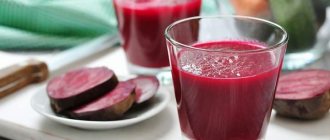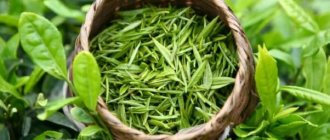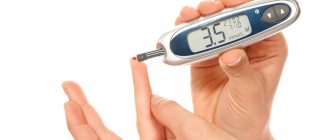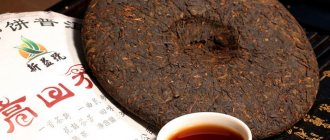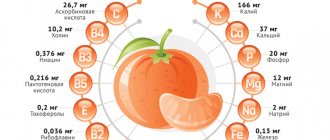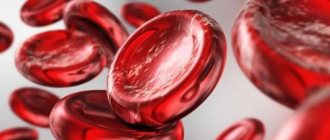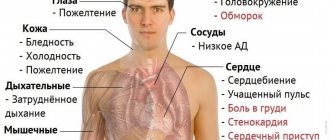Indications and contraindications for the procedure
Doctors call bloodletting phlebotomy. It is carried out only in sterile conditions, the doctor is selected with high qualifications, since the procedure is not easy and there is a risk of infection. A small amount of blood is removed after mechanical damage to a large vessel.
Bloodletting helps fight blood stagnation in the body, which is why this method is still used. The procedure is used for the following conditions:
- hemorrhoids;
- cerebral hemorrhage;
- chronic fatigue;
- depression;
- thrombosis;
- high blood pressure;
- overweight;
- poisoning
This procedure is stressful for the body. The method is not suitable for people with the following health problems:
- Vascular atherosclerosis.
- Heart defects.
- Unstable psyche
- Anemia.
- Bone marrow diseases.
- Unhealed ulcers and wounds.
- Hereditary blood diseases.
- Malignant tumors.
- Anemia.
Bloodletting is not suitable for pregnant women and people with low blood pressure. It is necessary to look for other methods of treatment.
Humor theory
In the European tradition, the idea of the benefits of bloodletting goes back to the ancient doctrine of humors and temperaments. According to Hippocrates, the human body was governed by the ratio of four vital juices (humors) - blood, phlegm, yellow and black bile. Humors, in turn, correlated with the four elements (fire, water, earth and air) and the movement of the heavenly bodies. Thus, a correspondence was established between the macrocosm and the microcosm, the Universe and the human body, and order and health were understood as the balance of the elements. In the human body this balance was expressed as the balance of humors. An imbalance entailed illness, excess and passion - and, conversely, a bad regime and vices caused an imbalance. Diseases were explained by acute, chronic or hereditary excess of one humor and deficiency of others.
Of the four humors, the greatest attention was paid to the quantity and quality of blood, in which all four elements were combined and balanced. The blood should not be too hot (this indicated an excess of the fiery principle) or too cold (excess water), too viscous (excess earth) or too liquid (excess air). According to the ideas of doctors of Antiquity, blood was created by the body from food and served as a building material for meat and bones. Hence the diet was based on the consumption of meat and neglected greens and vegetables, which were considered useless.. A lack of blood was harmful, but an excess was much more dangerous, and bloodletting became a way eliminate this excess.
Benefits of bloodletting
The benefit is that the body gets rid of old stagnant blood. Instead, a new one appears, due to which the entire body is rejuvenated. After the procedure, the body’s blood pressure and oxygen exchange return to normal, the activity of the blood vessels in the brain and bone marrow improves, and the genitourinary system is cleansed.
The procedure helps relieve blood viscosity, which helps normalize blood pressure and avoid serious illness - thrombosis. The blood does not leave alone; along with it, the body is cleansed of bacteria and toxins. However, we must remember that nutrients also disappear with them, so after the procedure it is necessary to take measures to replenish their deficiency.
Phlebotomy helps normalize the activity of the heart muscle. The rapid heartbeat goes away, the pain disappears. In addition, it relieves headaches and diabetes.
It has been proven that after the procedure, the appearance becomes more attractive, as the skin improves due to cell renewal. During the procedure and as you recover after it, excess calories are lost. The figure becomes slim without the need to exercise.
Why might you feel unwell after hijama?
The person may feel weak, dizzy, or even lose consciousness. Most often this happens due to fear of the procedure itself and a large accumulation of toxins. This condition will definitely go away after some time.
There is also a high temperature, which may mean that the body has started recovery processes. Symptoms of diseases may worsen, but there is nothing to worry about - the body heals.
Most often, if a person’s condition has not changed in any way after hijama, it means that the points were chosen incorrectly and it is necessary to repeat the procedure.
Harm of phlebotomy
The procedure can result in harm to the body:
- Hemoglobin levels will drop.
- Problems with blood pressure will begin.
- Bleeding will occur.
- Immunity will decrease.
- Exacerbation of chronic gastrointestinal diseases is possible.
After a course of bloodletting treatment, which lasts 7 procedures, the immune system will be noticeably suppressed. Which is comparable to three radiation procedures during the treatment of cancer, so at first the body needs to be helped to cope with bacterial and viral attacks.
Blood pressure problems may begin. Pregnant women run the risk of causing oxygen starvation in the fetus. Phlebotomy should not be performed immediately after suffering from respiratory diseases, as this may result in the disease returning.
Existing methods
Today there are many techniques. All of them are divided into local and general bloodletting. For local surgery, one small incision is made in the vessel. General involves a collection of small points on the body or one large one. In the latter case, large veins are used, usually in the neck or limbs. The following methods are used:
- Hirudotherapy. Healing ailments with leeches. They are placed on the incision site, from where they suck out the bad blood. Recently, a special device has appeared that can be used instead of leeches.
- Glass jars. They are placed warm on the body to suck out blood located close to the surface of the skin.
- Section of large veins and arteries. The method involves a lot of bloodletting and is therefore associated with great risk.
History of Hijama Practice
This method of treatment has been around for many thousands of years. Even ancient Greece, Egypt and China used hijama for treatment.
In 1550 BC There is a mention of cupping therapy in the oldest medical textbook, the Ebers Papyrus.
From Arabic, the word “hajma” is translated as “to suck.” After all, the process involves “sucking” blood by creating a vacuum. First, small incisions are made on the skin with a sharp instrument, and then they begin to pump air out of the cans, causing blood to come out.
Types of bloodletting with characteristics
This procedure originated simultaneously in different countries. Each absorbed experience and developed on the basis of the national traditions of their schools. Centuries later, 4 directions were formed:
- Chinese. Bloodletting is similar to acupuncture. Blood is removed at certain points. This is how Chinese masters block the development of the disease (each point carries its own indications). The technique refers to ancient Chinese ideas about energy. Traditionally, it is believed that the body's energy "qi" moves along a certain path, penetrating all organs and systems. Excess energy causes diseases; they are eliminated by piercing a certain area. In this case, blood loss is insignificant.
- Tibetan. Venous bleeding is used. The points are located in the area of veins, which are connected to different organs through anastomoses, so each point has its own effect on the body. Tibetan medicine affects the spinal cord: nerve endings, in response to irritation, send a signal to the organs for which they are responsible, and those, perceiving the information, change the nature of their work.
- European. Traditionally, large bloodletting is used, which is the most dangerous. Incisions are made locally, regardless of the position of the points. This procedure was often performed in the Middle Ages, but rarely today.
- Islamic. From time immemorial, small capillary cuts have been made on which vacuum cans are installed. Before the procedure, a massage is performed; it is needed to examine the skin for seals. The disadvantage of the Muslim method is the absence of a strong theoretical basis.
Bloodletting at home
The procedure can be performed at home. However, we must take into account that this is dangerous. The most popular method is oriental hijama. The man is conducted by a Muslim, and the woman is conducted by a Muslim. A person must really believe that the procedure will help; he must ask Allah for this. Bloodletting is carried out on strictly defined days of the month: 17, 19 and 21. It is better if the first day falls on a Monday. Women's days of the week are forbidden. Before the procedure, you must avoid eating for three hours. You can drink juices and water, even during the procedure.
After the procedure, you should not eat meat for two days. The diet should consist of vegetables, fruits and cereals.
You need to bleed correctly by following the steps:
- Places for installing cans are lubricated with cumin oil.
- Devices are disinfected.
- Punctures are made with a special device.
- Vacuum jars are placed in their place for five minutes until the skin underneath acquires a dark purple hue.
- Damaged areas are treated with cumin oil.
Tools for the procedure
Phlebotomy is performed using simple instruments. Incisions are made with thick needles or knives; their shape depends on the specific technique. The Tibetan technique involves the use of a small hatchet. It resembles a straight razor on a handle.
In the Islamic tradition and China, thick needles, knives or an oblique lancet are used. Cylinder-shaped cans come in a variety of sizes, are made of plastic and are sold with a pump to remove the air. Such kits can be purchased at a pharmacy.
For the patient, blood loss is a major health risk. It must also be remembered that phlebotomy is not a diagnosis or treatment of disease. This is a way to remove their symptoms and improve the general condition of the body.
Description
Bleeding, whose scientific name is phlebotomy, is a procedure whose main purpose is to collect blood from the body in a certain amount.
The session is performed through a shallow vein incision or puncture.
There are two types of hijab:
- General;
- local.
This method helps remove useless and stagnant blood fluid from the body. Against this background, the body begins to produce new, effective and high-quality blood, rich in important enzymes.
Patient reviews
I tried bloodletting using leeches. The blood flowed for a long time, the hemoglobin dropped. Hijama turned out to be better for me. The wounds did not itch or become inflamed. After the procedure, the bleeding quickly stopped, there was no weakness in the body. Bloodletting gave me a surge of strength and energy. Anastasia
The procedure turned out to be painless. Two hours later, pain began in the places where the cups were. After the night, all the unpleasant sensations disappeared. After three days, the wounds began to heal and itch. From the back I looked like a flower with ladybugs sitting on it. I'll go for the procedure again soon.
Elizabeth
What effect to expect
After one session you will notice the following results:
- decreased blood pressure;
- Blood thinning;
- Improving the process of hematopoiesis;
- removal of stagnant fluid along with toxic substances and other decay products.
The person begins to feel much better.
In addition, phlebotomy allows you to get rid of a variety of diseases.
The duration of the effect will be different in each specific situation - several hours or months.
